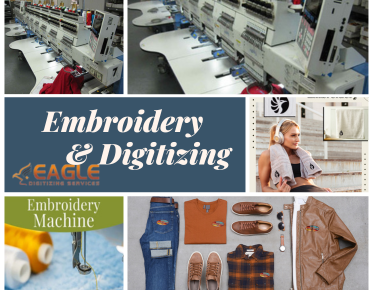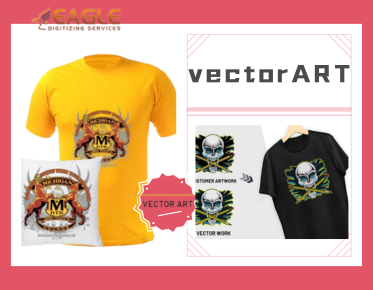What makes embroidery a popular leisure activity with market potential?
Embroidery has become a popular leisure activity for many people today, offering both creative expression and the potential to generate income. While some people enjoy embroidery as a hobby, others see it as an opportunity to market and sell their embroidered products. However, if you want to create marketable embroidered items, it's important to understand which embroidery designs are most appealing to potential buyers. While there are many ways to find high-quality embroidery designs, there are only a few reliable sources that offer designs suited for various projects. When selling embroidered products, careful selection of design is crucial to appeal to your target audience.
Choosing the Right Product for Embroidery
The first step in creating a successful embroidered product is selecting the item on which the embroidery will be applied. Embroidery can be done on a wide variety of garments and fabrics, from hats and towels to shirts and blankets. When choosing a design, you need to consider whether it will work well with the selected product. For example, a small logo design might work perfectly on a cap but may not be as effective on a large blanket. Ensuring that the design complements the product is essential for creating visually appealing and functional embroidered items.
Matching the Design to the Embroidery Style
Once you’ve chosen the product, the next step is to determine which embroidery style best suits your design. Different styles of embroidery, such as Elizabethan, cross-stitch, or modern machine embroidery, have specific characteristics that affect how the design will appear on fabric. For instance, Elizabethan embroidery is known for its intricate floral patterns and gold threads, making it a great choice for luxurious items like pillows or tapestries. When selecting a design, think about whether the embroidery style fits the product you are working on. A mismatch between the style and product can diminish the overall effect of your embroidery.
Considering the Cost of Embroidery Designs
The cost of embroidery designs is another significant factor to consider. While there are many free designs available online, the most intricate and high-quality designs often come with a price tag. If you are serious about selling your embroidered products, investing in premium designs might be necessary to set your work apart from the competition. However, if you’re just starting out or working on a tight budget, don’t worry—there are still plenty of great designs available for free or at a low cost. You just need to know where to look for them.
Finding Free or Low-Cost Embroidery Designs
For those who are looking for budget-friendly options, many websites and online platforms offer free or low-cost embroidery designs. These designs can range from simple monograms to detailed floral patterns, allowing you to experiment without breaking the bank. However, while free designs can be appealing, it’s important to assess the quality before using them in your products. Some free designs may not be as refined as paid options, which could impact the final appearance of your embroidery. Be sure to test out the design before using it on a product intended for sale.
Ensuring the Design Works for Your Project
After selecting a design, it's essential to ensure that it works well for your chosen project. This includes considering the size, complexity, and color scheme of the design. For example, a large, detailed design may not translate well onto a small garment like a cap, while a simple, understated design could be overshadowed on a large blanket. Think about the fabric you are working with and how it will interact with the embroidery. Different fabrics respond differently to stitching, so testing the design on a sample fabric before starting your final product can help avoid issues like distortion or color bleeding.
Finalizing Your Embroidery Design Choice
Once you've carefully considered the product, embroidery style, cost, and fabric, it's time to finalize your design choice. Always keep your target audience in mind—what kind of designs will appeal to them? Are they looking for modern, minimalist patterns, or do they prefer classic, ornate designs? Understanding your customer base is key to making sure your embroidered products stand out in the market. Additionally, don’t hesitate to mix and match designs or incorporate custom elements to give your creations a unique, personal touch.
Conclusion
Creating marketable embroidered products requires careful consideration of design, style, cost, and material compatibility. By selecting the right embroidery design for your chosen product, matching the design to the embroidery style, and ensuring it fits within your budget, you can produce high-quality items that appeal to a broad audience. Whether you’re working with free designs or investing in premium ones, taking the time to plan out your embroidery projects will lead to beautiful and successful results.
FAQs
1. How do I choose the right embroidery design for my product?
Consider the type of product, fabric, and the overall aesthetic you want to achieve. The design should complement the item and fit well with its size and material.
2. What are some popular embroidery styles?
Popular styles include Elizabethan embroidery, cross-stitch, machine embroidery, and modern minimalistic designs. Each has its own unique characteristics and application.
3. Are free embroidery designs worth using?
Yes, but you should evaluate the quality of free designs before using them. Some free designs may lack the refinement of paid ones, so it’s important to test them out before using them for commercial products.
4. How can I ensure my design looks good on fabric?
Test your design on a sample fabric to ensure that it stitches well and that the colors and details translate properly to the final product.
5. Is it worth investing in premium embroidery designs?
If you are serious about selling your embroidered products, investing in premium designs can set your work apart and allow for more intricate, professional-looking results.



